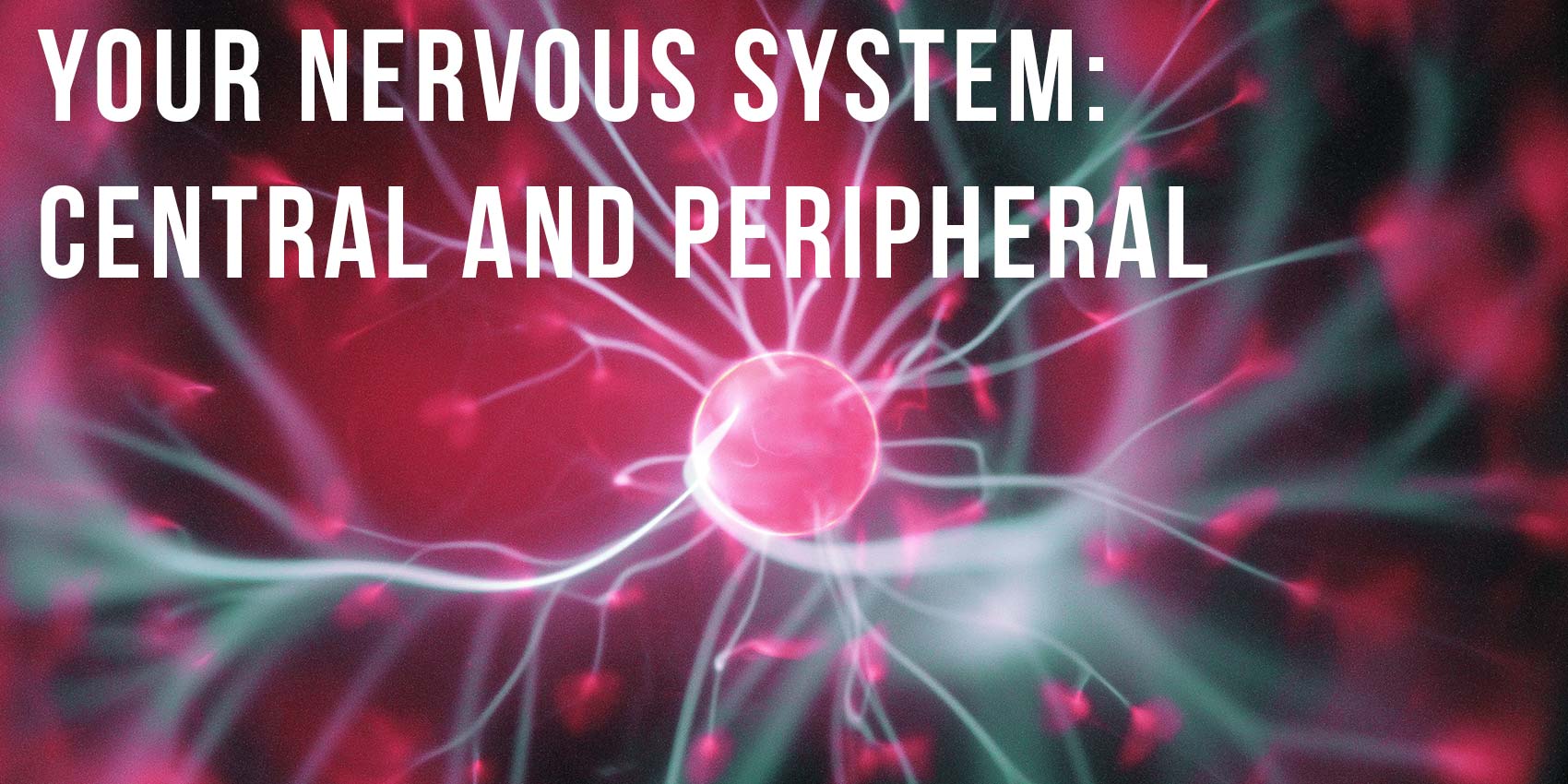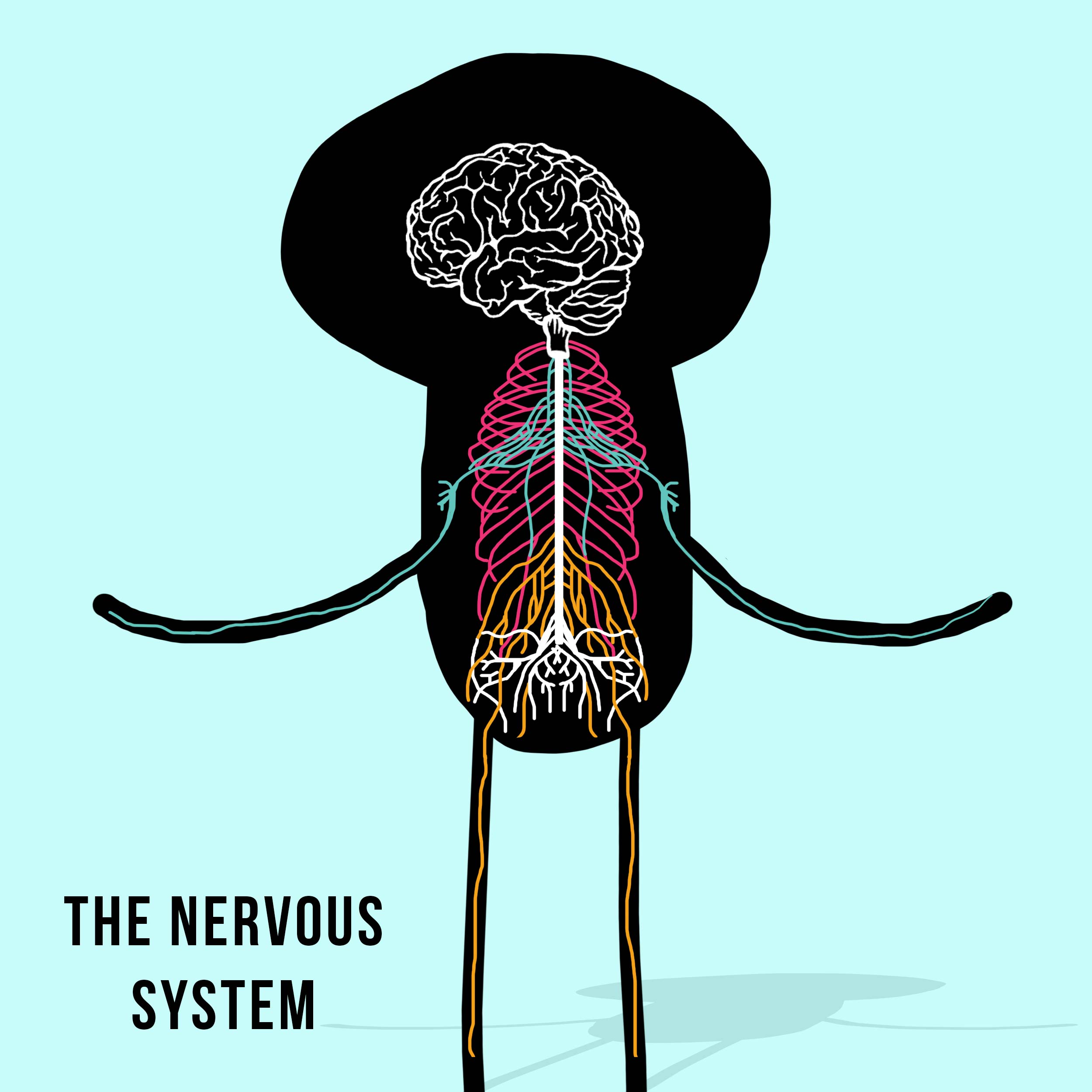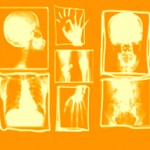08 Nov Your nervous system: central and peripheral

The best way for you to learn about your environment and to react to it is through your nervous system. You have an urge right now to do 5 push ups (awesome, go for it!) and your nervous system responds so you are able to do so. You feel a chill and decide to put on a sweater. Thank you, nervous system for the 411 on that.
Now for the part that includes all the tech words on which you will likely be tested later….
First, a breakdown, and then we’ll apply it to the real world.
Structurally you have 2 nervous systems. What do we mean by STRUCTURALLY? It means, where they are located in the body (rather than defining them by what they DO in the body). So first, structurally speaking, you have your central nervous system Your central nervous system consists of your brain, spinal cord and nerves (see picture).
WORD ALERT: Your “nerves” start within your central nervous system and branch out to every other part of your body. (Not to be confused with “neurons” which are cells that send signals to other cells.)
Ok, so that’s the first nervous system, the second is called the peripheral nervous system. Don’t freak over the name. Peripheral means the outer, edge or border of something. (Central means the center, so the other part deals with the NOT center, the peripheral.) Your peripheral nervous system is made up of sensory neurons (cells) and nerves (both of those were word alert words above) that connect to each other and ALSO to the central nervous system. Confused? Keep reading…

Ok, stand up with your arms extended to your sides—in other words do what Phil is doing in the picture. You can imagine that your central nervous system is your brain and spinal cord, that’s a snap. So now imagine that you have these wires—your nerves—that go from your spinal cord to everywhere in your body—yeah, to the outer edges, the periphery. Easy, to imagine right? Especially because you know that in order to move your fingers (for example), your brain needs a way to send a signal to your fingers and it does that by sending a signal down the spinal column out to the periphery—the nerves in your fingers.
Which brings us to the FUNCTIONAL differences. Above you read about STRUCTURAL differences (the Central versus Peripheral). Now you need to know FUNCTION, what the heck these things actually do, and there are two different functional parts of the nervous system.
1) You have voluntary movement (the stuff you know about and which is termed “somatic”) movements that you choose to do. 2) And you have involuntary movement (the stuff your body does without you thinking about it, called “autonomic”).
Your voluntary system (somatic) is made up of nerves that connect your brain and spinal cord with muscles and sensory receptors (cells) in your skin. They talk to each other! Phone pings, move hand to respond. Playing soccer, contract muscles to run and control the ball. You get the idea. These are the movements you make with your body/limbs to do things and accomplish goals.
Your involuntary system (autonomic) connects the central nervous system with your lungs, heart, stomach, bladder, intestines and sex organs. The voluntary system is responsible for keeping you alive without you even thinking about it… it makes your heart beat, your lungs expand, your bladder fill up (do you have to suddenly pee now?). You’re not really aware of all the stuff this system does. But you may feel your heart race sometimes or your skin crawl or your tummy rumble, but those are all things happening outside your control.
To help illustrate the difference: if you go running, your voluntary system is in charge of making your legs run, your involuntary system is in charge of increasing your heart rate. You can consciously control whether you want to run more (voluntary), you can’t consciously control if you want your heart to beat faster (involuntary).
Here’s another scenario to pull structure and function together: Super adorable student alert heading down the hallway towards you. Your eyes send an alert to your brain that you see something incredibly fabulous. Then your brain (CNS) sends signals down your spine (CNS) to your legs (Peripheral) to walk (voluntary) more to the left so that you bump into that student. When you start sweating profusely out of nervous energy, that’s your involuntary system kicking in. You see how many structures and functions are involved in that 3 second encounter you may have at school?




Post Question:
Describe a time when your involuntary system made you blush.
Answer the post question here
What's being said